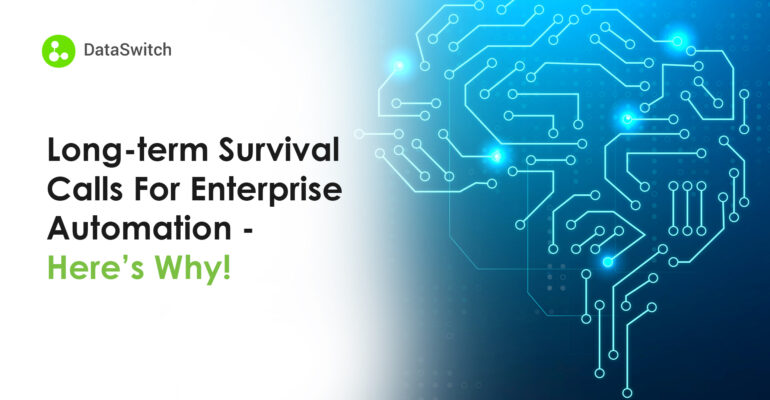Long-term Survival Calls For Enterprise Automation – Here’s Why!

Long-term Survival Calls For Enterprise Automation – Here’s Why!
Reports say that according to IT consultants most enterprises in the industry are already on their digital transformation journey and some have been for quite a while now. Their struggle is real. 70% of enterprises still find it difficult to get close to the average success rates.
While the existing process and lack of niche experts may be trivial reasons why enterprises struggle to achieve digital transformation, the most vital is moving pilot projects to more efficient and modern multi-cloud rollouts.
This ideally means that enterprises will opt for more high-end cloud applications. (The average organization has nearly 115 applications and the numbers are bound to increase.) However, this inevitably creates communication gaps and integration silos between data and applications. Having components that don’t talk to each other slows down digital business execution.
To survive, enterprises must overcome such integration challenges. How?
Enter Enterprise Automation.
Why Is Enterprise Automation Critical For Your Business?
It’s critical to make enterprise automation a vision in your digital transformation strategy. If you want to achieve automation at scale, make sure you have an architectural framework that can impact your business process directly. This is where it becomes important to automate integrations that migrate or stream data from application to application or any of your cloud data warehouses.
A single and unified platform that supports all or multiple of an enterprise’s automation projects is better suited since these platforms are more scalable when compared to limited-functionality point solutions. Such platforms also help organizations cut down on overheads.
An AI/ML-based, low-code platform is ideal since they are equipped to handle complex automation tasks such as data integration (ETL/ELT), app integration and iPaaS, API management, workflow and business process management, and AI/MLOps. If self-serviceable, these platforms can be used by anyone from both IT and business streams.
Enterprise Automation With DataSwitch Integrate
DataSwitch’s Integration toolkit is self-serviceable, business user-friendly, metadata-based, providing AI/ML-driven data aggregation. It consolidates and integrates data for domain-specific data applications.

Being specifically designed for enterprise automation, DS Integrate acts as a fabric over the tech stack of your choice. The platform empowers your functional departments to be able to effectively establish app and data connections, streamline workflows, and drive customer-centric decision making.
In practicality, enterprises can use the DS Integrate to ingest and bring structure to previously unstructured data. All you need to do is to specify the structure that the data is needed in. DS Integrate will automatically generate code for the creation of the knowledge base in a format that is compatible with cloud databases like Spark, Talend, Matillion, DataBricks, etc.
Data engineers can simply upload the structured or unstructured data in a vast range of source configuration formats that include PDF, image, text, ODBC, and JDBC. The DS Integrate will adhere to all coding best practices and convert the input into a structured data catalog. This is then infused into the new cloud platform.
As depicted, various business streams including HR, IT, marketing, finance, and supply chain can take advantage of the ELT features, prebuilt and end-to-end automation, and rapid data warehousing solutions provided by DS Integrate. In addition, the ML and NLP-powered data visualization interface can be used for data-driven decision-making.
Want to learn more about DS Integrate and how it can help you achieve Enterprise Automation? Click here.
For a live demo of DS Integrate, click here.



